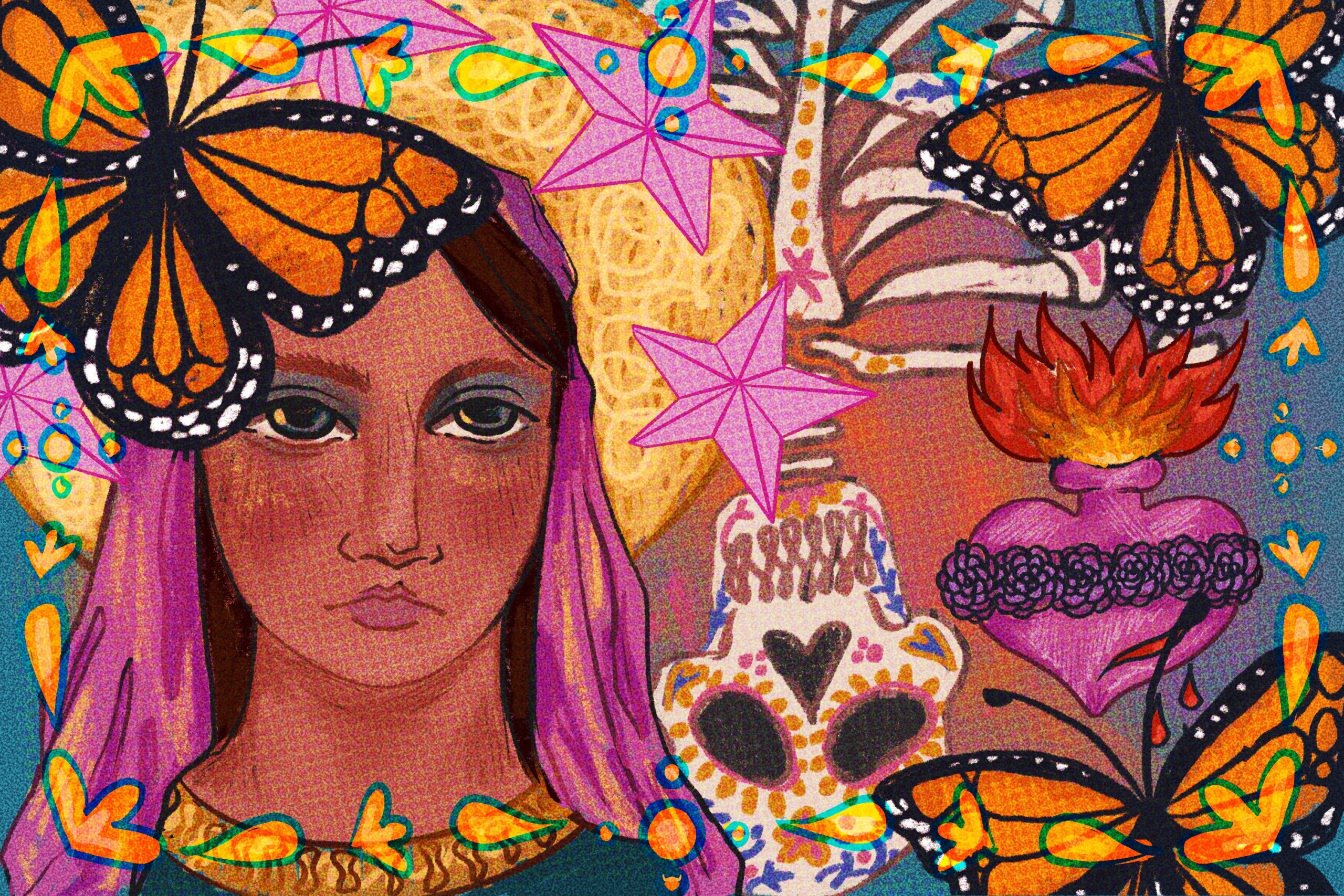In the heart of Mexico, between the late days of October and early November, there comes a time when life and death intertwine in a dazzling spectacle of color, symbolism, and celebration. It is a time when the veil between the living and the departed is at its thinnest, and families invite their ancestors back into their homes and hearts. This is Día de los Muertos.
This remarkable tradition transcends the boundaries of life and death, captivating the world with its artistry and reverence. This day reminds us that in the dance of existence, death is not the end, but merely a part of life’s eternal, beautiful cycle.
Día de los Muertos is far more than just a colorful spectacle; it’s a testament to the resilience of cultural traditions. With its deep roots in Mexican history, it draws from the customs and beliefs of ancient Mesoamerican civilizations, such as the Aztecs, Maya, and Nahua. In these cultures, death was not feared but celebrated as a natural part of life’s cycle. After death, departed souls would embark on a journey to the afterlife, guided by the goddess Mictecacihuatl, the “Lady of the Dead”. Those still living would help in their own way, providing food, water and tools for the deceased’s journey. That was until the arrival of Spanish conquistadors in the 16th century. With the spread of Catholicism by the Spanish, indigenous traditions were suppressed. Ingrained native customs fused with Catholic beliefs led to the modern-day Día de los Muertos celebration.
La Ofrenda
Dia de los Muertos has many different components and ways to celebrate, but at the heart of it lies the ofrenda, a sacred and elaborate altar meticulously assembled to honor departed loved ones. The ofrendas represent the spirit of the celebration, bridging the gap between the living and the dead. The altar is more than a decorative display, it is a symbol of memories, love and connection. It reminds us to cherish the beauty and richness of life, not only for ourselves but for those who are no longer with us. The ofrenda is meticulously embellished with symbolic elements from bright marigolds to twinkling candles, every detail of this homage has a special meaning.
Marigolds: A Fragrant Guiding Path
Marigold flowers, or cempasúchil, serve as a guiding beacon for the spirits of the departed. Their bright orange and yellow hues symbolize the sun, leading the way for loved ones to return to the world of the living. The scent of marigolds fills the air, infusing the atmosphere with a sense of vibrancy and warmth. Their delicate petals are often arranged into intricate patterns on the ofrenda, framing the photos and mementos of the deceased.
Candles and Copal Incense: Illuminating the Way
Candles provide a warm and luminous glow on the ofrenda. Their light is believed to help guide the souls back to the world of the living. Additionally, copal incense is burned to purify the environment and create a scented trail for the departed to follow. The flickering flames and fragrant smoke create a tranquil and spiritual atmosphere, inviting the spirits to join the living in celebration.
Calaveritas de Azúcar: Sweet Remembrances
Scattered amidst the marigolds and flickering candles, you’ll find a captivating array of calaveritas de azúcar, or sugar skulls. These meticulously crafted confections not only represent the departed but also remind us of the sweetness and impermanence of life. Some are personalized with the names of loved ones, each one a colorful tribute to an individual’s unique spirit.
Pan de Muerto: Sharing Bread with Ancestors
The fragrant aroma of pan de muerto(“Bread of the Dead“) fills the air during Día de los Muertos. This sweet and often adorned bread is a culinary treasure. Its circular shape symbolizes the cycle of life, while the bone-shaped decorations on top represent the deceased. Families share this bread as a gesture of communion with their ancestors, together across the borders of life and death.
Photographs and Mementos: Preserving Memories
The ofrenda is a tableau of memories. Photographs of the departed are placed alongside personal items, cherished possessions, and the favorite foods and beverages of those being honored. These mementos tell stories, preserving the essence and personality of the deceased, and inviting them to share in the joys and experiences of their living descendants.
In the creation of these ofrendas, families engage in a labor of love that is as much an artistic expression as a spiritual one. As you stand before an ofrenda during Día de los Muertos, you are not merely observing an altar; you are witnessing a powerful testament to the enduring connection between life and death. It is a vibrant, vivid, and heartwarming reminder that the departed are not forgotten, but cherished and celebrated, and that, in the lovingly constructed altar, we find a profound celebration of life itself.
Día de los Muertos transcends borders with its universal message. It invites people from all backgrounds to celebrate life, remember their ancestors, and honor the beauty of existence. Use this celebration as an opportunity to connect with your family and elders, learn about your family’s history and traditions, and pass down the stories and customs to the next generation.
As we celebrate the beauty of this holiday, let us also celebrate its message: life is a gift, and our loved ones are never really gone as long as their memory lives in our hearts. Día de los Muertos serves as a reminder to live life to the fullest, to enjoy and appreciate it, and that love and memory can reach far beyond time and spac.

















